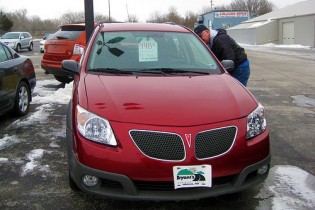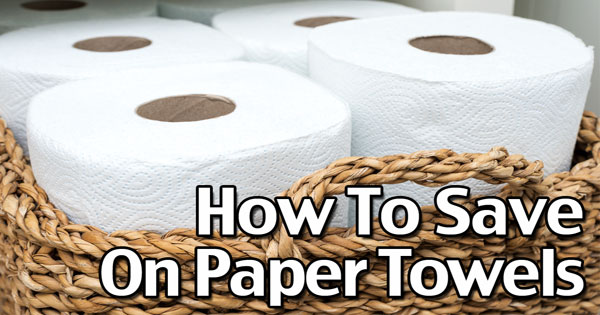
Michael from Wilmington, NC asks: When should you get rid of an old car that is paid for and buy a newer one that would hopefully have less maintenance cost. I am assuming the new car would be paid for outright without credit expenses.
Michael Answers: That is a good question. We recommend buying cars outright with no credit debt and then driving them until they die completely or until it is no longer practical to keep them. When we buy cars, we like to pay cash and we generally pay $2000 to $6000 for the newest low mileage used car when can find. Our last two "new" cars were a 1991 Buick Skylark we bought in 1998 with 50,000 miles for $2500 and a 2000 Ford Taurus station wagon with 59,000 miles we bought in 2004 for $6000. We paid more for the Taurus because it was only four years old, it was in really good shape and we thought it was worth paying a little more for the car Tawra and the kids would be using regularly. (We also hoped it would last a little longer than some of our previous buys).
When we buy a used car, we usually choose well enough that it needs very few repairs in the first year or two. Generally, we expect to pay regular maintenance costs (new tires, oil changes, brake pads, etc.) no matter what car we drive, so we usually don’t count those expenses as "repairs". We will continue to drive the car, making regular repairs until we begin to get the sense that its life span is coming to an end. When we do have to make repairs on a car, we consider it reasonable to spend several hundred dollars a couple times a year to keep it going. This might include replacing a water pump, doing major brake work or general engine work.
Usually, a catastrophic repair (like a new transmission or a new engine) is the death nail for one of our cars since our purchase price for a replacement is usually low. Occasionally, we will fix a catastrophic repair if the car rarely needs work and if we have not had the car very long. Here’s an example where we did that:
Once we received a used car as a gift from family after I crashed a car on an icy road. Two weeks later, the transmission failed. Since the car was new to us, didn’t cost us anything and seemed to be OK otherwise, we went ahead and spent $2000 to fix the transmission.
Most of the time, a car needs only occasional repairs, but over time, the frequency of repairs increases. When it seems that the number of repairs is on the rise, we try to figure out whether or not we think it is a trend. If so, we think of the car as "on its way out" and stop making unnecessary repairs. If we have decided that a car is "on its way out" and it requires a single repair over $500, we will usually consider it dead and replace it. If the car that is a short timer needs several lesser repairs over several months that begin to add up to a lot of money, we will usually get rid of it and get something else.
We had a 1991 Buick Skylark that was a good car for a long time. We originally bought it for $2500 in 1998 when it had 50,000 miles on it. Until 2004, it needed only occasional repairs, so we didn’t feel too bad if we had to put $300 into it from time to time. In 2004, the repairs seemed to come more frequently and we began to think that the car would need to be replaced soon.
We still continued to do regular maintenance, but avoided spending a lot of money on repairs that were not critical. We got a crack in the windshield that was a little bit annoying, but since it was only around the edges and Kansas law did not require us to replace it, we decided not to repair it at the time. Again, we were pretty sure the car was on its way down hill. The heater started to occasionally smell like anti freeze which made me think the heater core was going to fail in a year or two. We started to notice that the paint was peeling from the rear fenders, but because we didn’t think the car was going to last a long time, we decided not to re-paint the car. We still made some regular repairs, but eventually, the car had a brake failure that was difficult to put a price on. We had already spend $500 in the previous 3 months for regular repairs above general maintenance and it appeared that the brake problem could cost another $300-$400. At this point, we decided that the white car had exceeded its useful life, since we would have spent $900 in just a few months if we repaired it and we would still have had a car with a cracked windshield, a dying heater core, peeling paint and other problems that we had not yet discovered.
You will want to consider where your car is in it’s useable life. If you want to keep your expenses low, always remember that a car’s basic purpose is to get you from place to place reliably. You can keep more of your money if you’re not driving the car to impress other people. We usually try to keep the cars looking presentable, but we normally go for clean "plain Jane" cars that run well. All major systems should work well. We live in Kansas, where the temperatures are often over the 100° mark in the summer, so we think that Air Conditioning is a must. When we lived in Colorado, we considered it more of an "option".
When it is clear that a car no longer fulfills it’s basic purpose: to get you from place to place reliably within a reasonable budget, it’s time to get another one.
You are wise in considering a newer "used" car when you replace an older car. Usually, you get the best buy on a car that is new enough to need few repairs, but old enough to be relatively inexpensive. You have to shop around to make sure that you find a good used car with no signs of trouble and it is wise to have a mechanic check it out of you don’t know much about cars.
We try to stick to cars with 60,000 miles or less that appear to have been well maintained and cost between $2000 and $6000.
For Readers considering buying "New":
Brand new cars cost more than they are actually worth, so it’s best to let someone else take the financial hit of being the first buyer of a car. Some people buy brand new cars expecting to "save" on maintenance costs and repairs, but all cars require occasional maintenance and repairs and parts for new cars tend to be more expensive.
The "white car" cost us $2500. We drove it for 8 years, so it cost us $312.50 per year. We averaged $300 per year for repairs, so our total cost for the car was $612.50 per year. Thats PER YEAR, NOT PER MONTH. A similar car purchased new costs $446 per month. That is $5352 per year or $26,760 after five years of payments. Buying used, we saved $4852 per year or $24,260 for the entire cost of the car.
If you still think the new car is worth it, don’t forget that the new car will cost you more in insurance and registration fees and after two years, you will probably be putting money into repairs on top of your monthly payment. It’s something to think about.
photo by: twodolla





Where do you find such low cost cars? I am looking (for about 6 months) and all the low cost cars I find have more than 150k miles on them. To get a car with less than 100k miles, it is more than $10,000. What tips can you give me?
We have bought them on e-bay, craigslist and just sitting on corners around town.
Tawra,I have a $2,000 tax refund and I am in need of a car. I have’nt been fortunate enough to find a reliable car for the little money I have. I am unemployed and have decided to continue my education. I need a good car. Should I wait and save more money maybe? Thanks! you are a jewel.
It is hard for me to say with out knowing more so I will just tell you what I would do in your situation. I would really try to find a car for $2000. They are out there you just need to look and you can’t be too picky – it may not be the best looking car but if it runs pretty good your ok. Another thing if you still can’t find one then if you have good public transportation of some sort use that for a few months until you can save up some more. If push comes to shove and you just have to get one don’t pay more then $3000 for one. They are out there for that price no matter where you live.
Your “How to Buy a Used Car” video is helpful. Do you have all the steps you discussed in an article? I would be so grateful for a step-by-step guide. I hope to convince my husband that the dealership is not the only place to find a good car.
Unless a dealership has are really good track record and comes highly recommended I stay away from them. You can get ripped off from them just as much as buying from an individual plus they charge way more than an individual does in most cases because they have to pay for their business needs, salesmen, and so many other things are added into the price tag for them.
I first would ask friends, family or co workers if they know of anyone selling something.
Take someone with you to look at the car that is a mechanic or knows basics about cars. You can even ask the person if you could take it to your mechanic to check. Sometimes they will let you.
If you can’t take someone here are a few things to check.
The mileage compared to the price.
Is the engine very dirty and covered in oil. This is a very bad sign usually.
Does the engine look brand new and spotless. This is not good either because they may have cleaned it really good to cover oil leak. Look for happy medium.
Does the inside of the car look trashed or not well carried for. If they don’t take care of the inside usually they don’t take care of the engine either.
Hope a couple of the above tips helped. I don’t know if these next are exactly what you what you are needing but these posts from the website might help some.
https://www.livingonadime.com/buy-newer-car/
https://www.livingonadime.com/pay-cash-for-car/